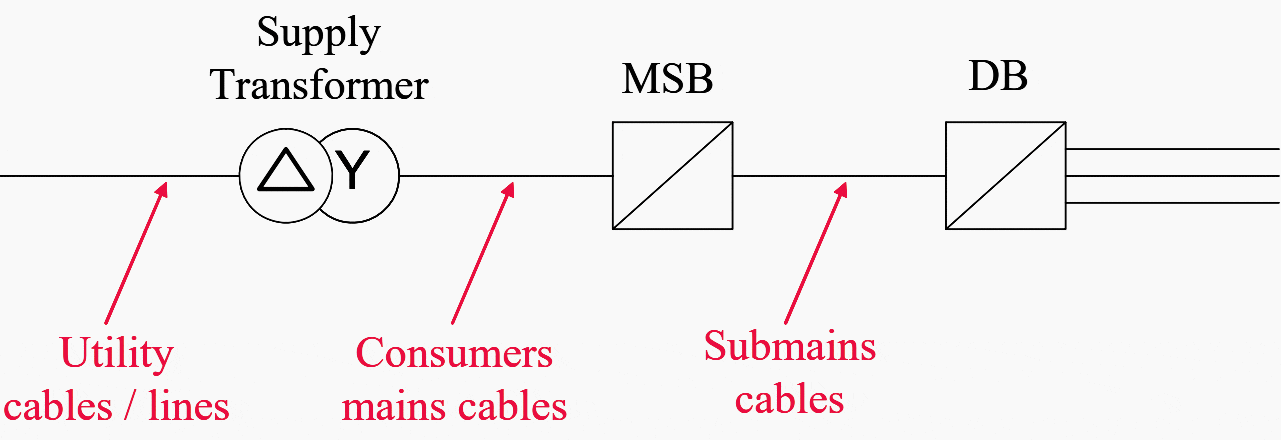High fault currents
There are two major problems that can occur in electrical systems: these are open circuits and short circuits. Of the two, the latter is the most dangerous because it can lead to very high fault currents. These currents can have very substantial effects (thermal heating and electromechanical forces) on equipment that may require replacement of equipment and may even cause fires and other similar ensuing effects in the electrical system.

Building systems are particularly at risk. To prevent problems from short circuits, it is necessary to design electrical protection systems that will be able to detect abnormal fault currents that may occur and then take remedial action to isolate the faulty section of the system in as short a time as is consistent with the magnitude of the short circuit fault current level.
This requires that the fault current be predicted for a fault in any particular location of the circuit system. We thus need to establish methods of fault calculation.
Fault calculation is not simple for a number of reasons:
- There are many different types of fault in three phase systems. The impedance characteristics of all electrical items in the system must be known
- The fault impedance itself may be non-zero and difficult to estimate
- There may be substantial fault current contribution from rotating machines etc.
- The initial cycles of fault current may be asymmetric with substantial DC offset
- The earth impedance in earth faults can be difficult to estimate accurately
- DC system faults also include inductance effects in fault current growth
For example, the possible fault types that may occur in a three-phase system are:
- Three phase (symmetrical) faults (the most severe in terms of current)
- Phase to phase fault
- Single phase to earth fault
- Three phase to earth fault
- Phase to phase to earth fault
In the very simplified coverage of fault calculations that follows we will look only at symmetrical three phase faults.
We do not cover any asymmetrical faults (phase to phase and single phase) except for some general comments on their behaviour. In general, three phase symmetrical faults will give the maximum fault current level at any location and thus such calculations represent worst case situations in general.

Because they have low impedance systems, low voltage electrical systems, such as those in buildings, generate very high levels of fault currents.
The prospective short-circuit current and the fault level (power) at the connection point to the utility supply are important parameters that the designer of an electrical installation needs to know and can be obtained from the electricity utility distributor.
The prospective short-circuit current is defined as the current which would flow as a result of a bolted 3-phase fault. Typical value at the point of supply for 230/400V distribution systems:
- Suburban residential areas: 10 kA
- Commercial and industrial areas: 25 kA
Knowing the fault level, the impedance of the upstream circuit and devices (e.g. transformers, conductors) can be derived. The prospective fault current varies at different points in the supply:
- At the supply transformer terminals, it is limited by the impedance of the distribution transformer and feeder conductors.
- At the main switchboard, the fault current is further reduced because of the additional cable impedance of the consumer’s mains.
- At the distribution board, the fault current is further decreased by the cable impedance of the submains.
| Title: | Fault calculation methods for industrial and commercial power systems – Course, Industrial and Commercial Power System |
| Format: | |
| Size: | 940 KB |
| Pages: | 32 |
| Download: | Right here | Video Courses | Membership | Download Updates |



Doing short circuit and load flow analysis using e tap software
Interested to improve my Electrical technical knowledge